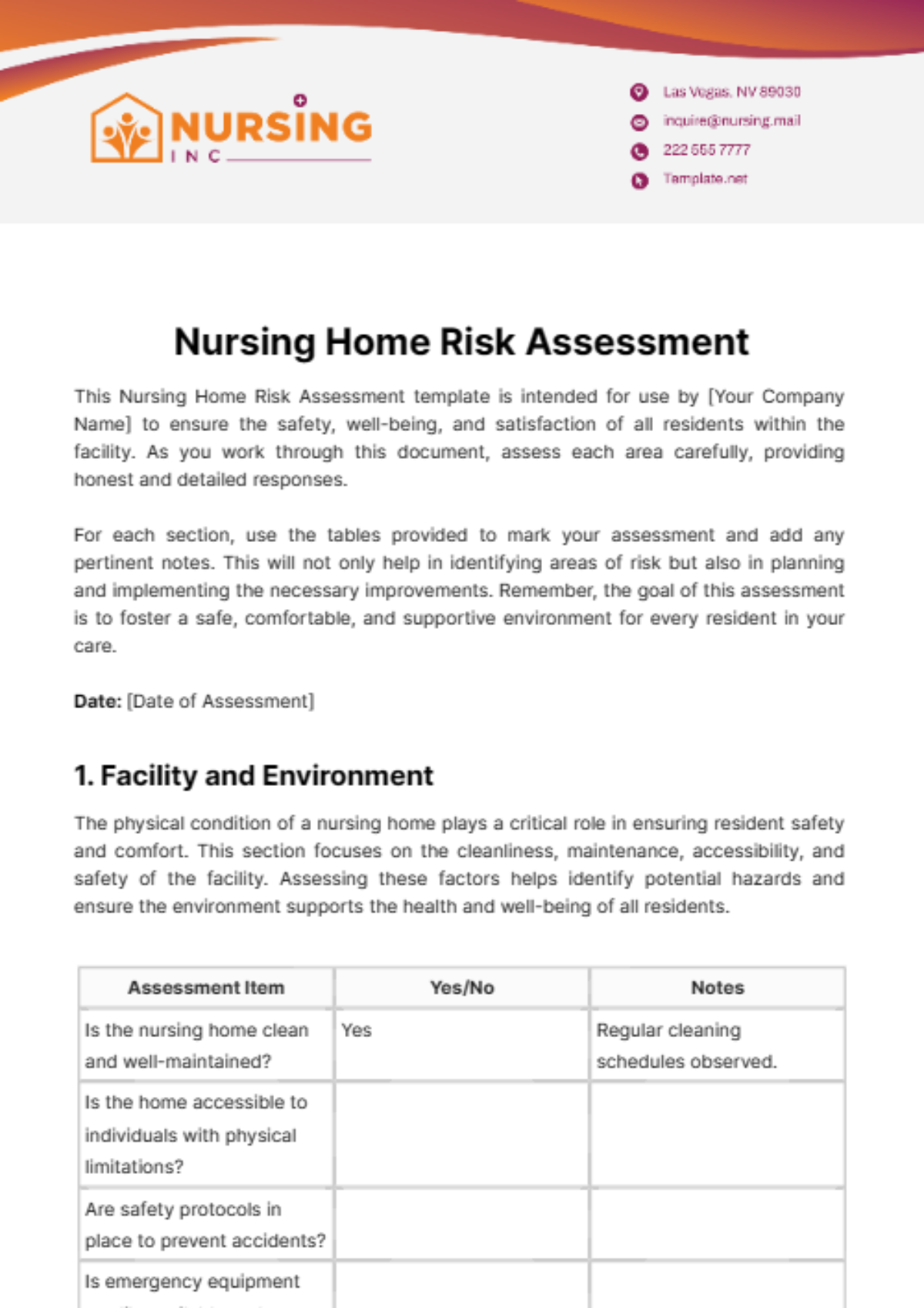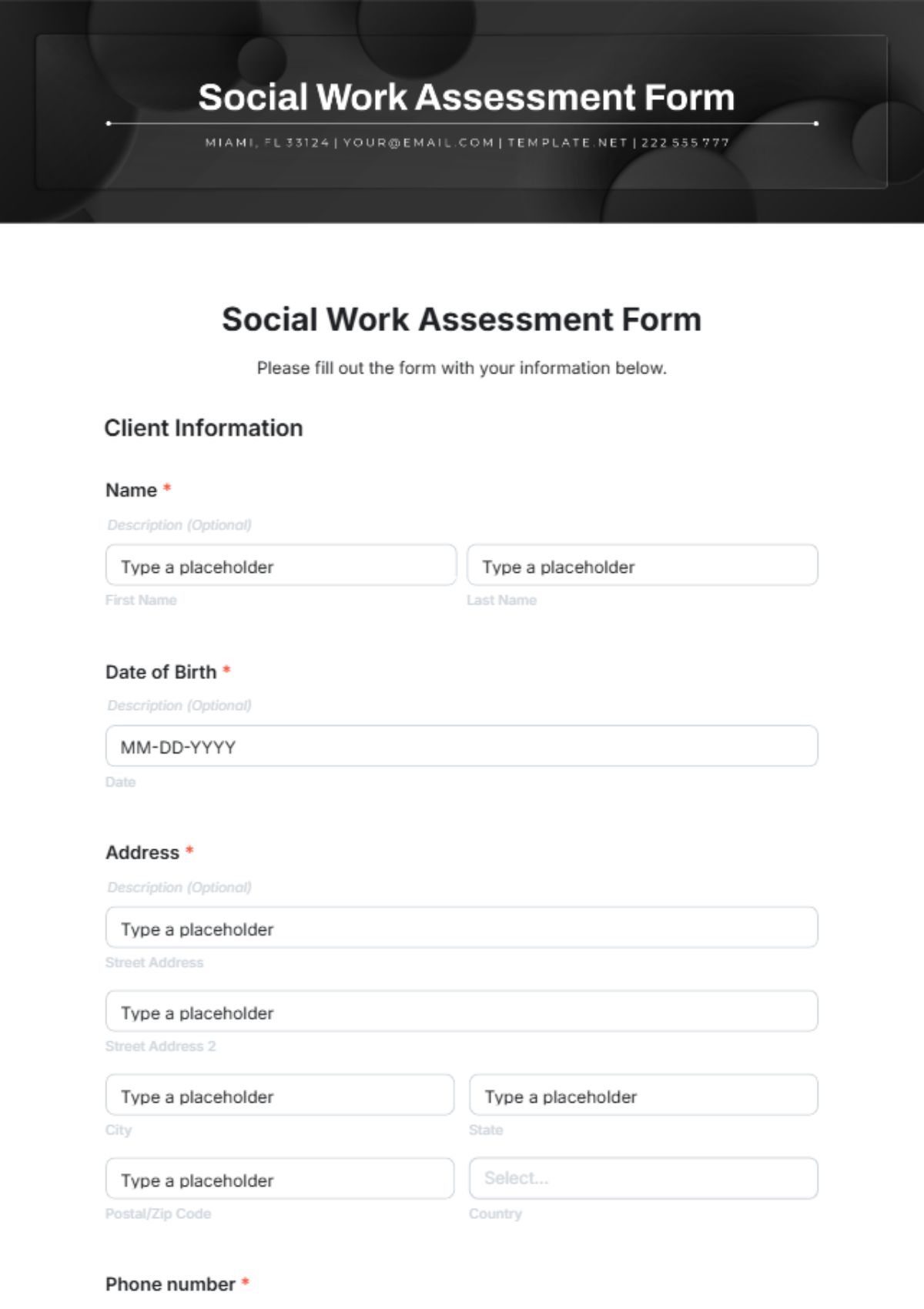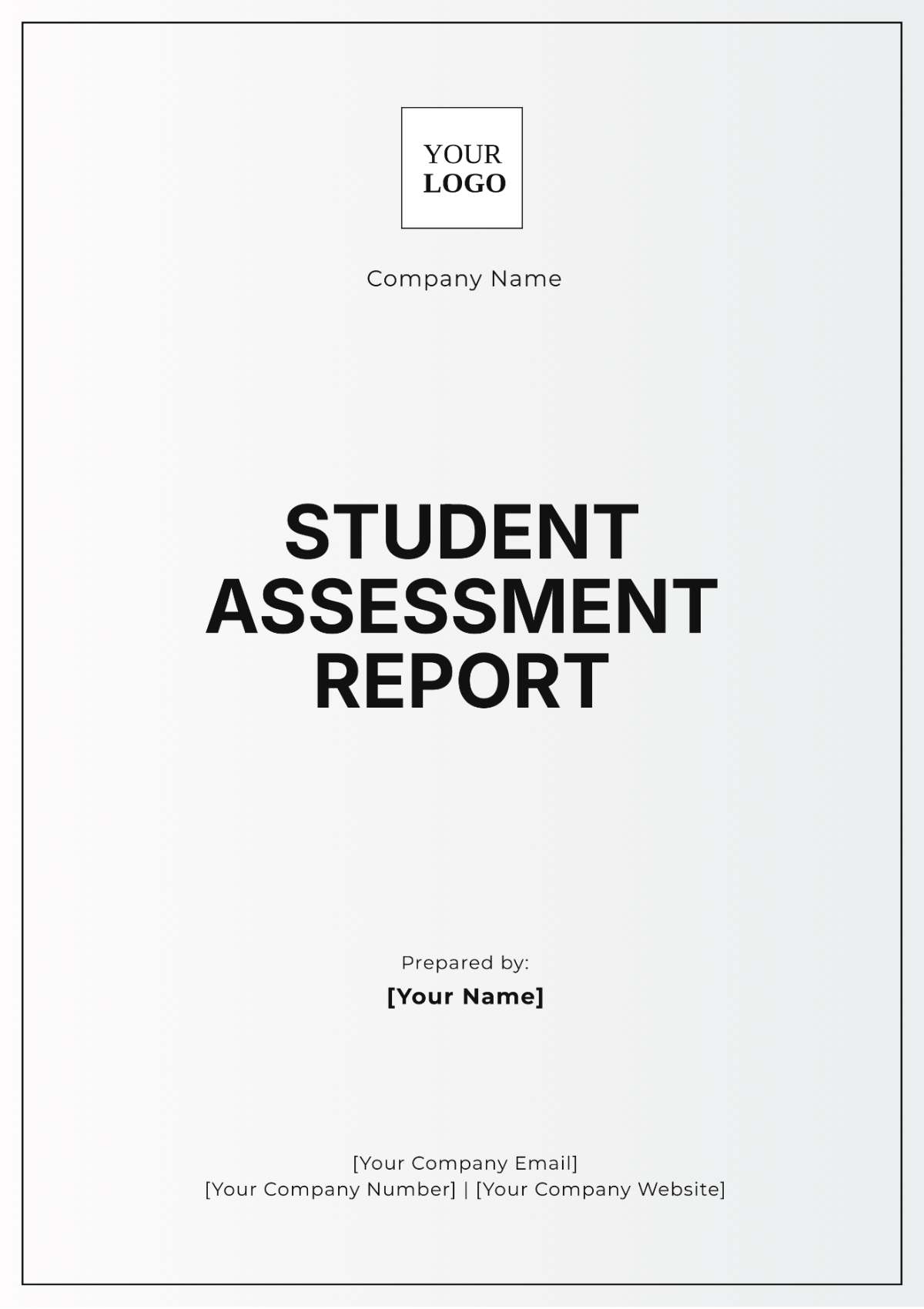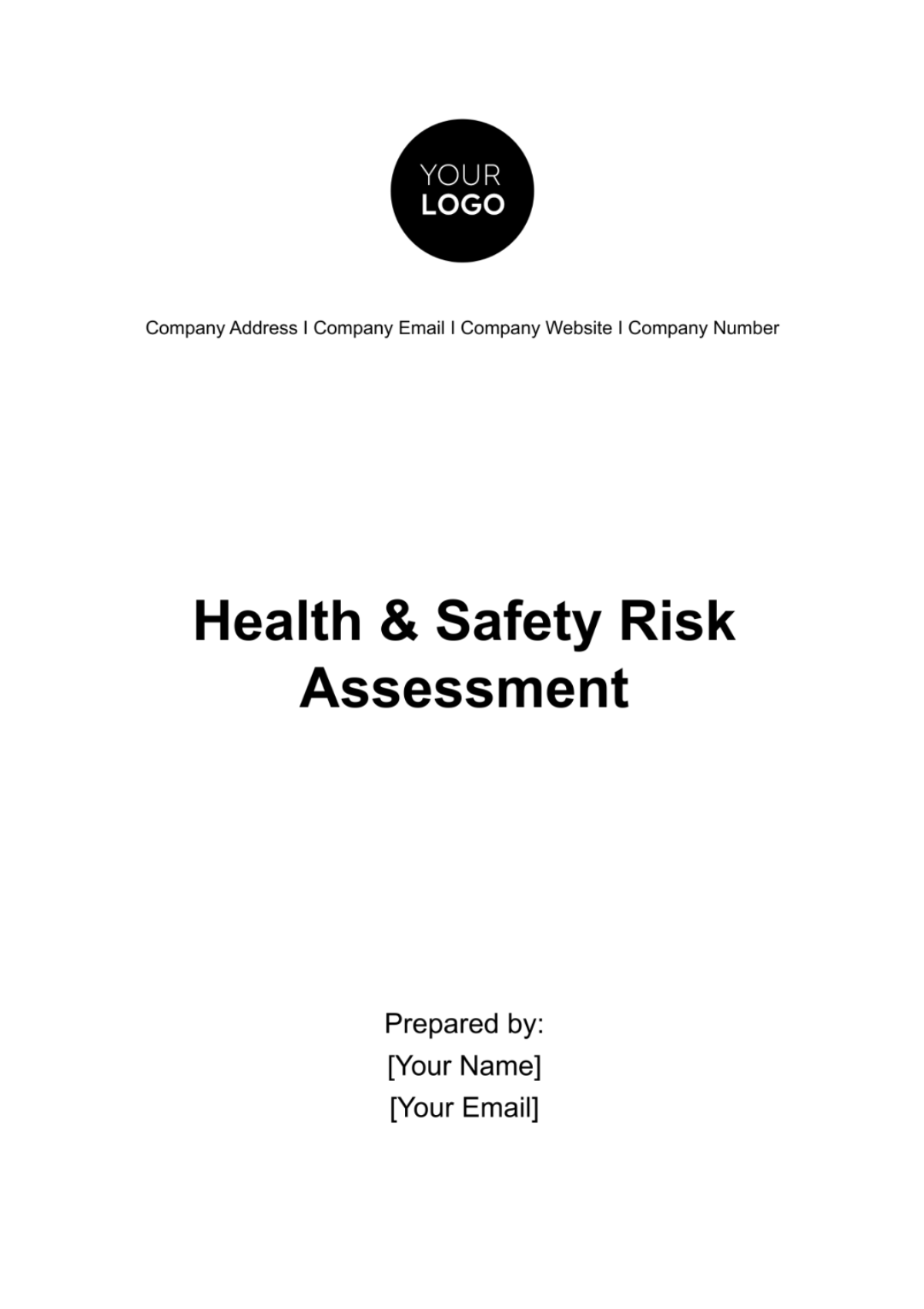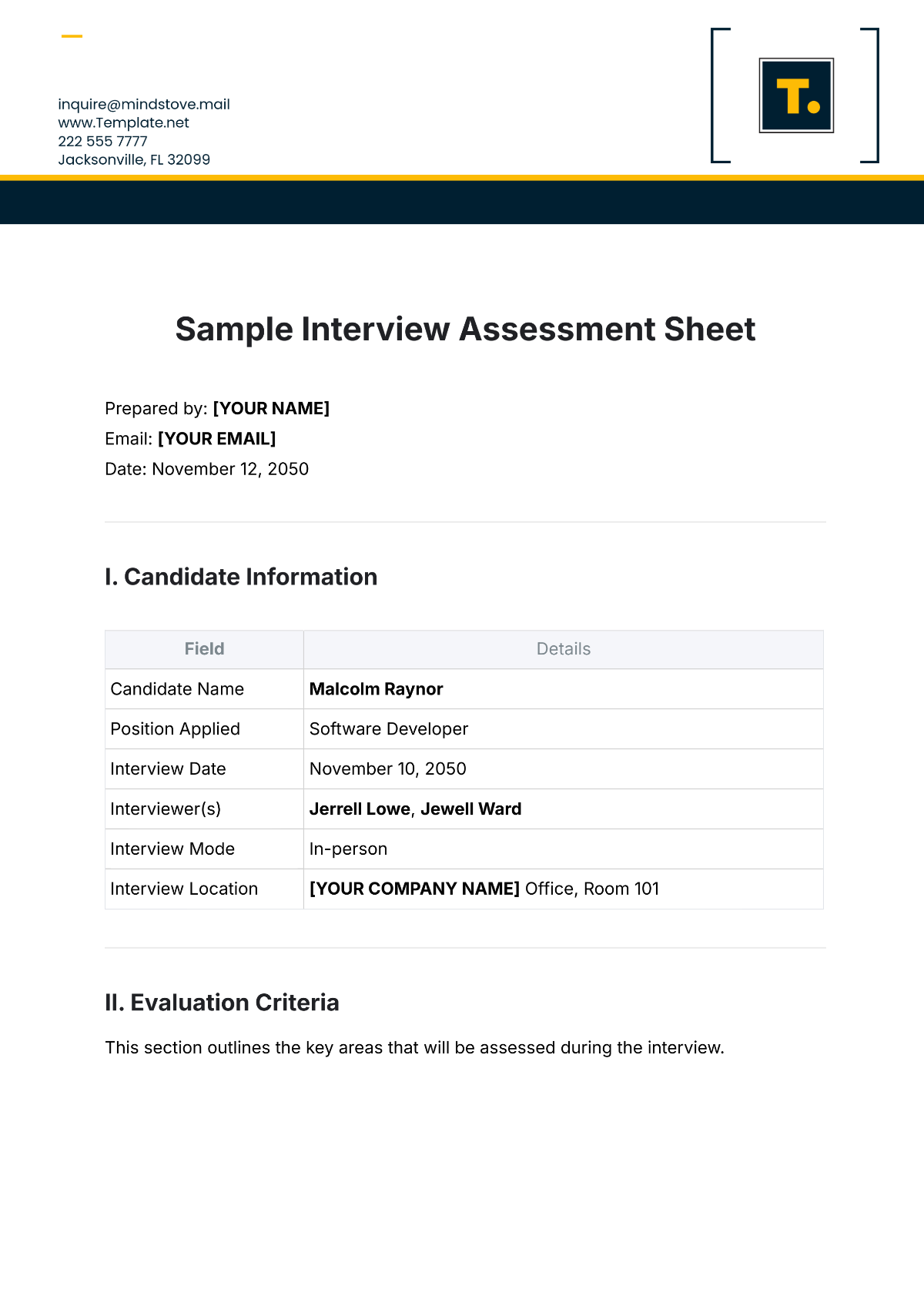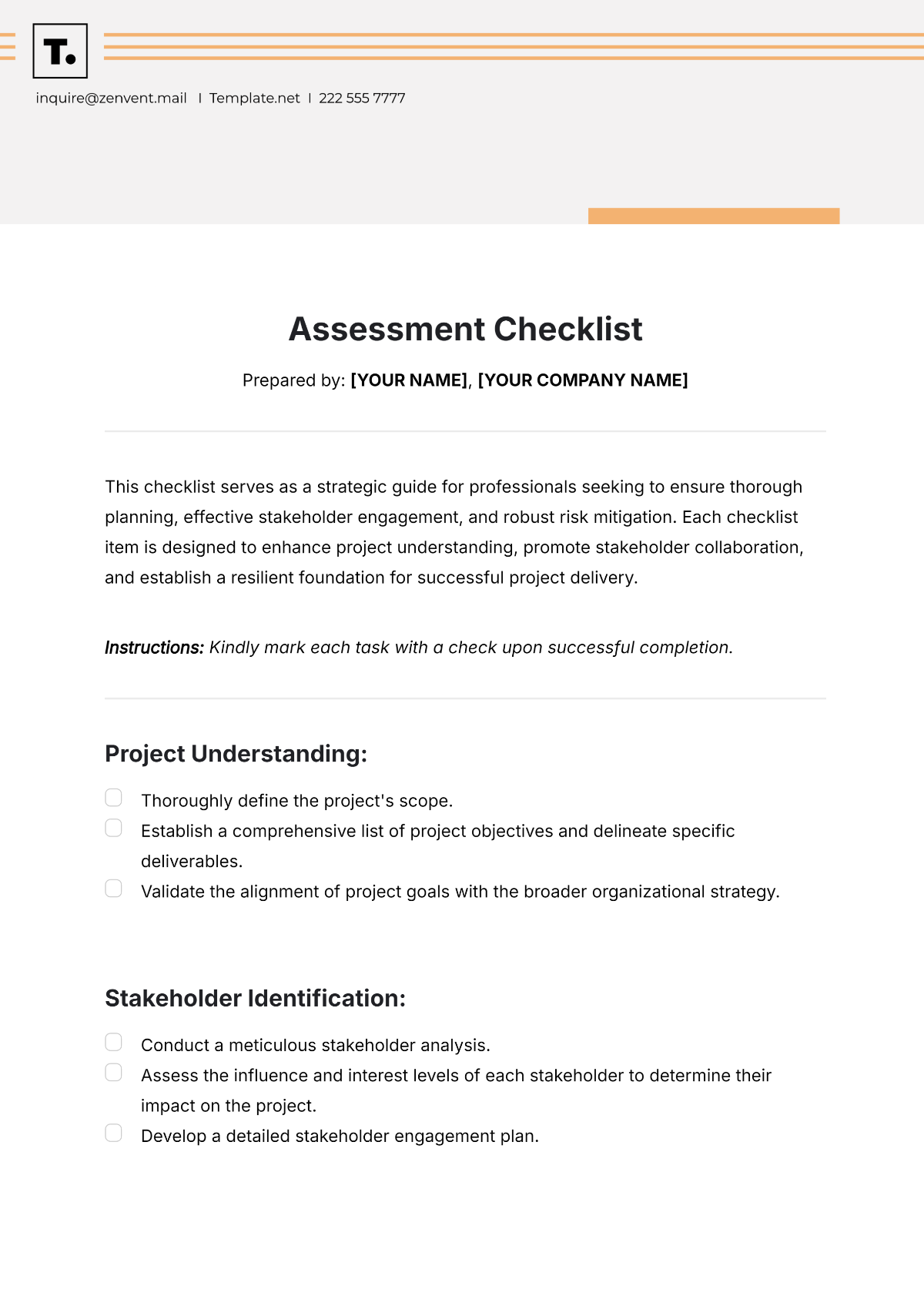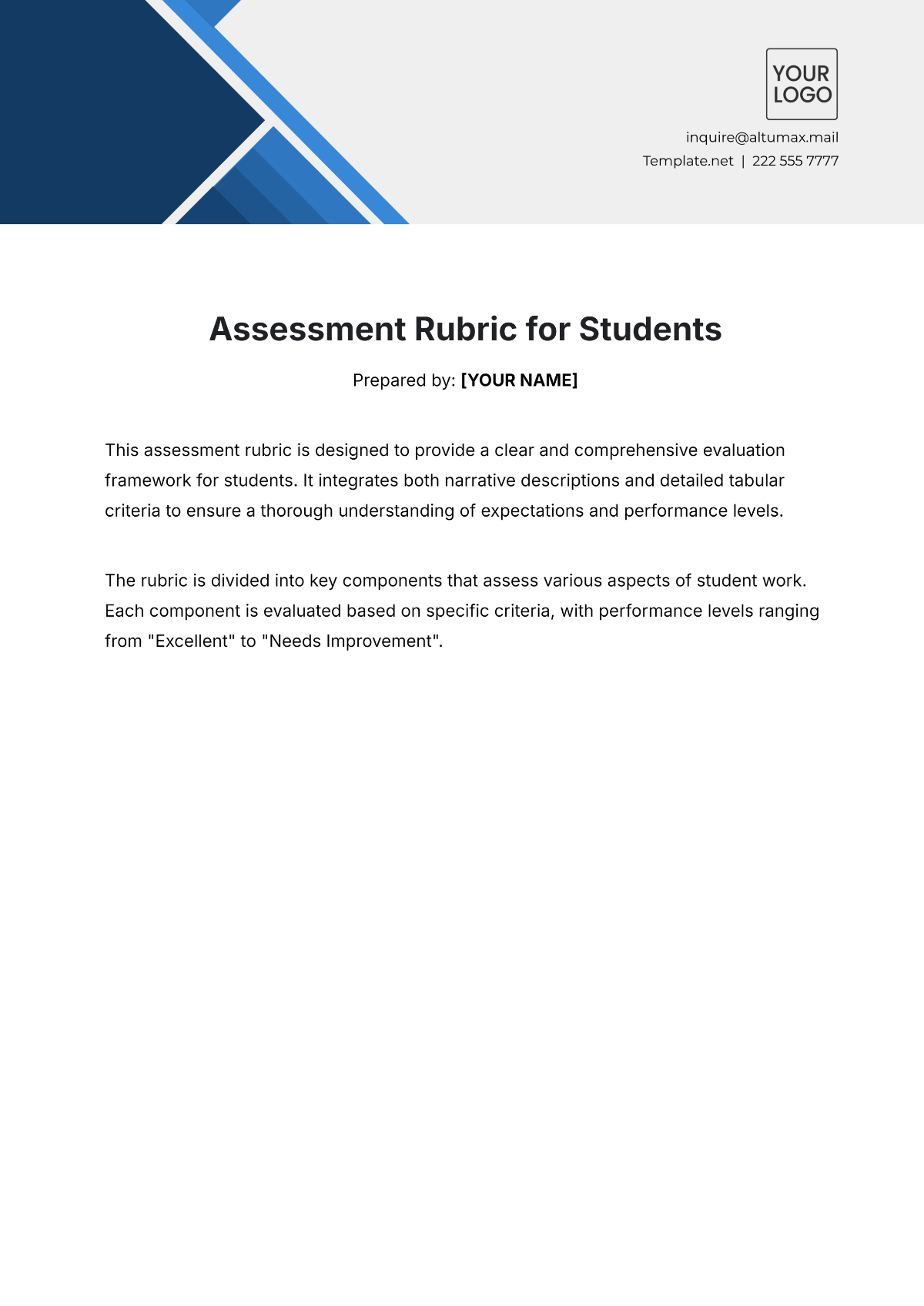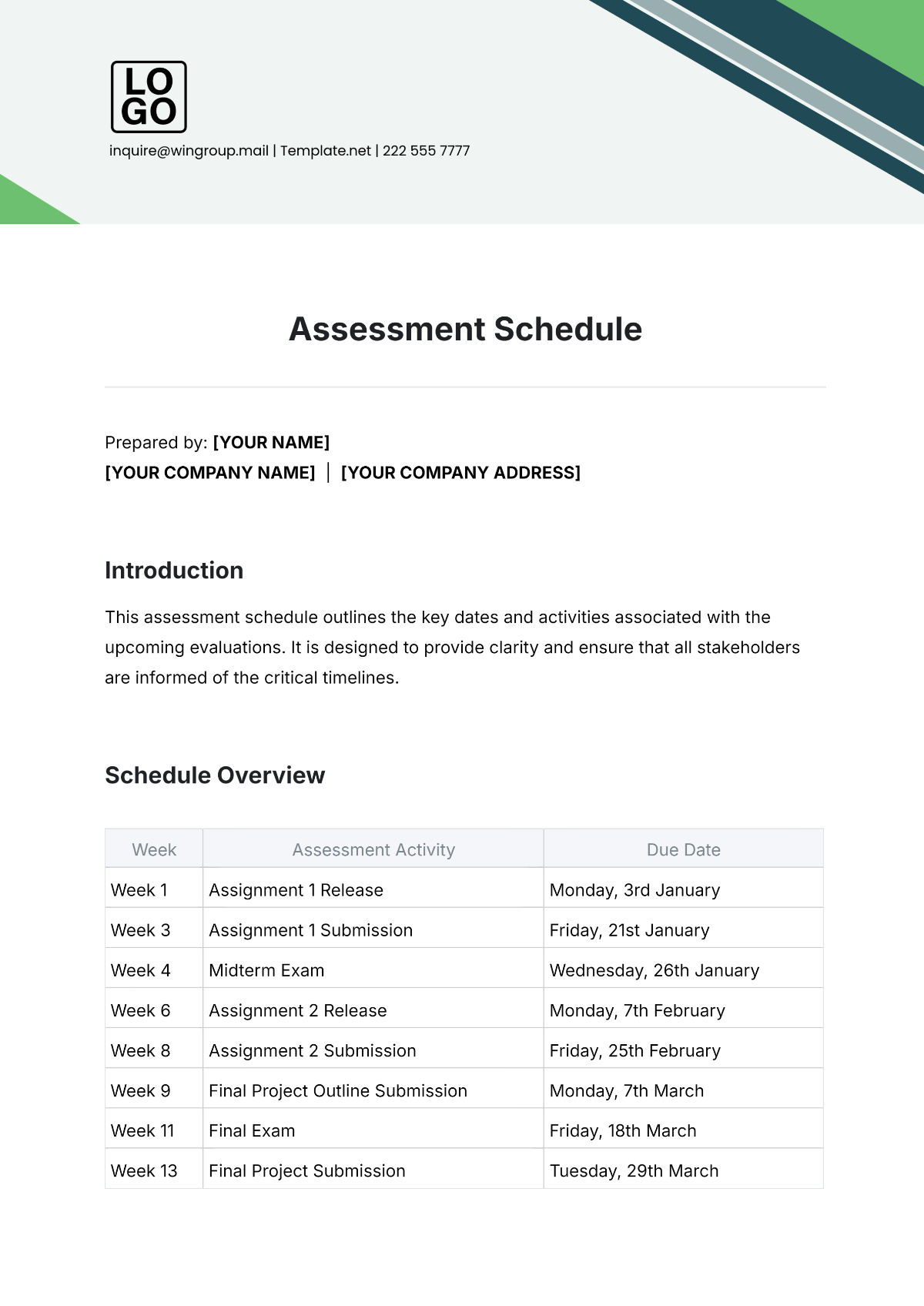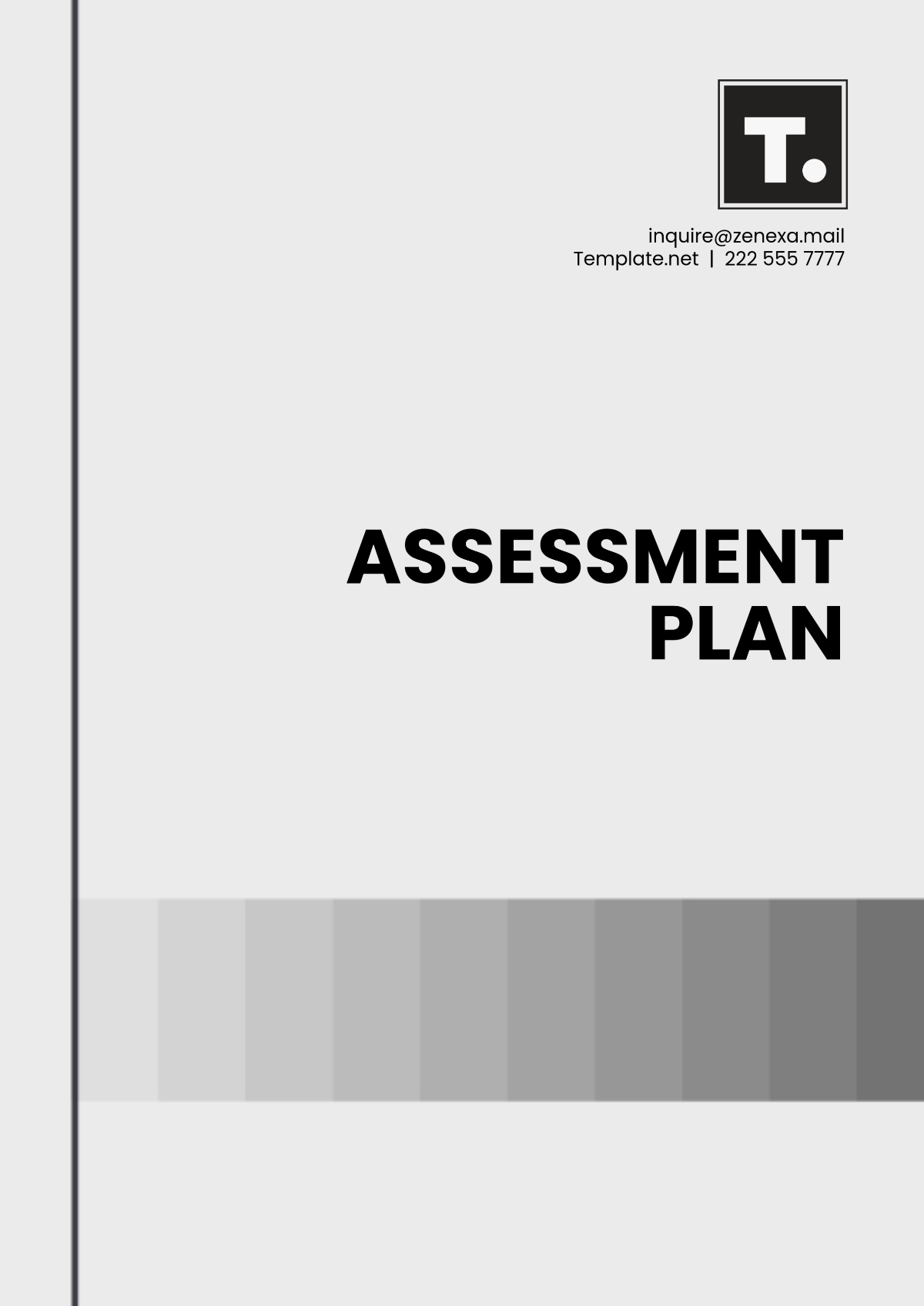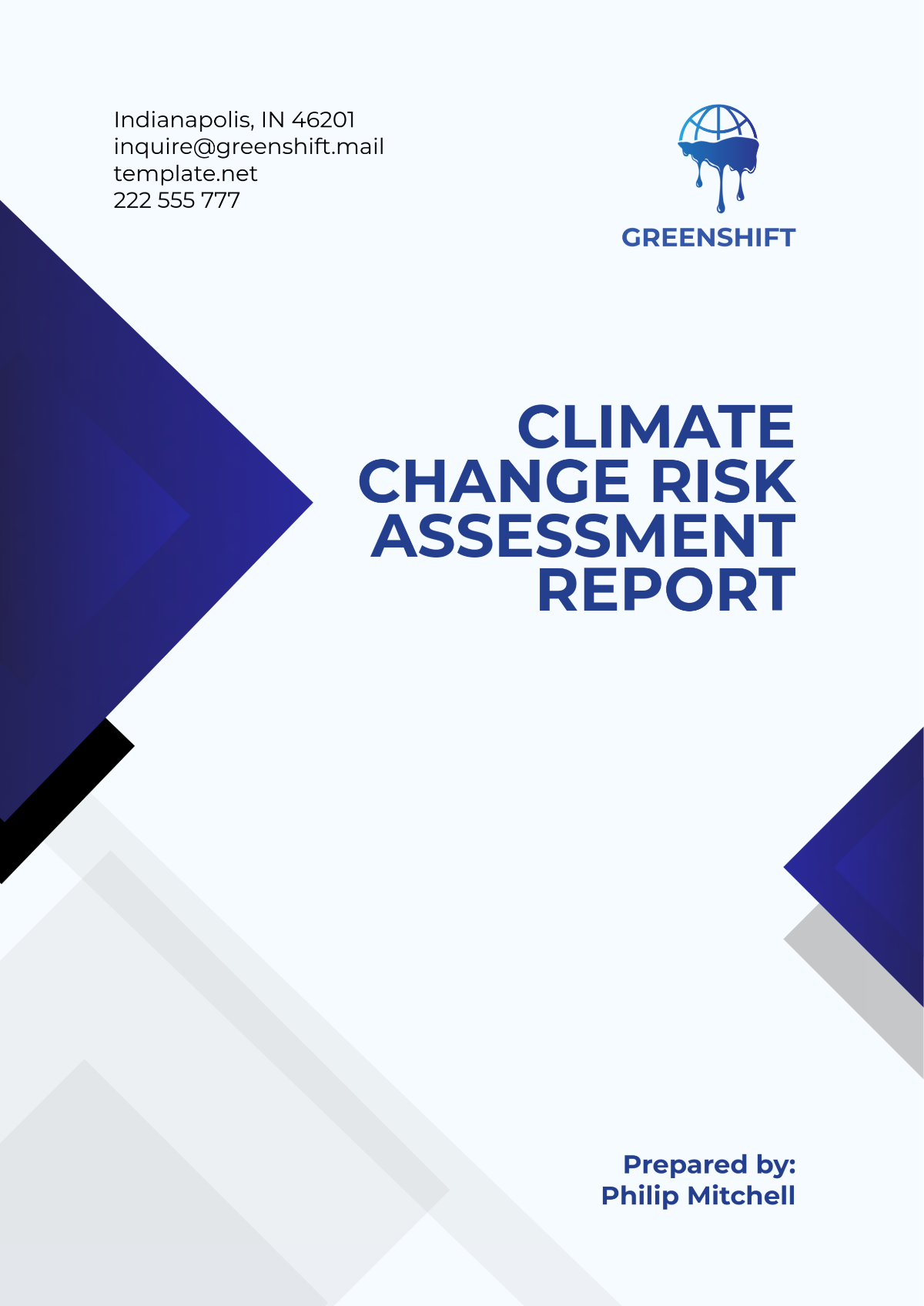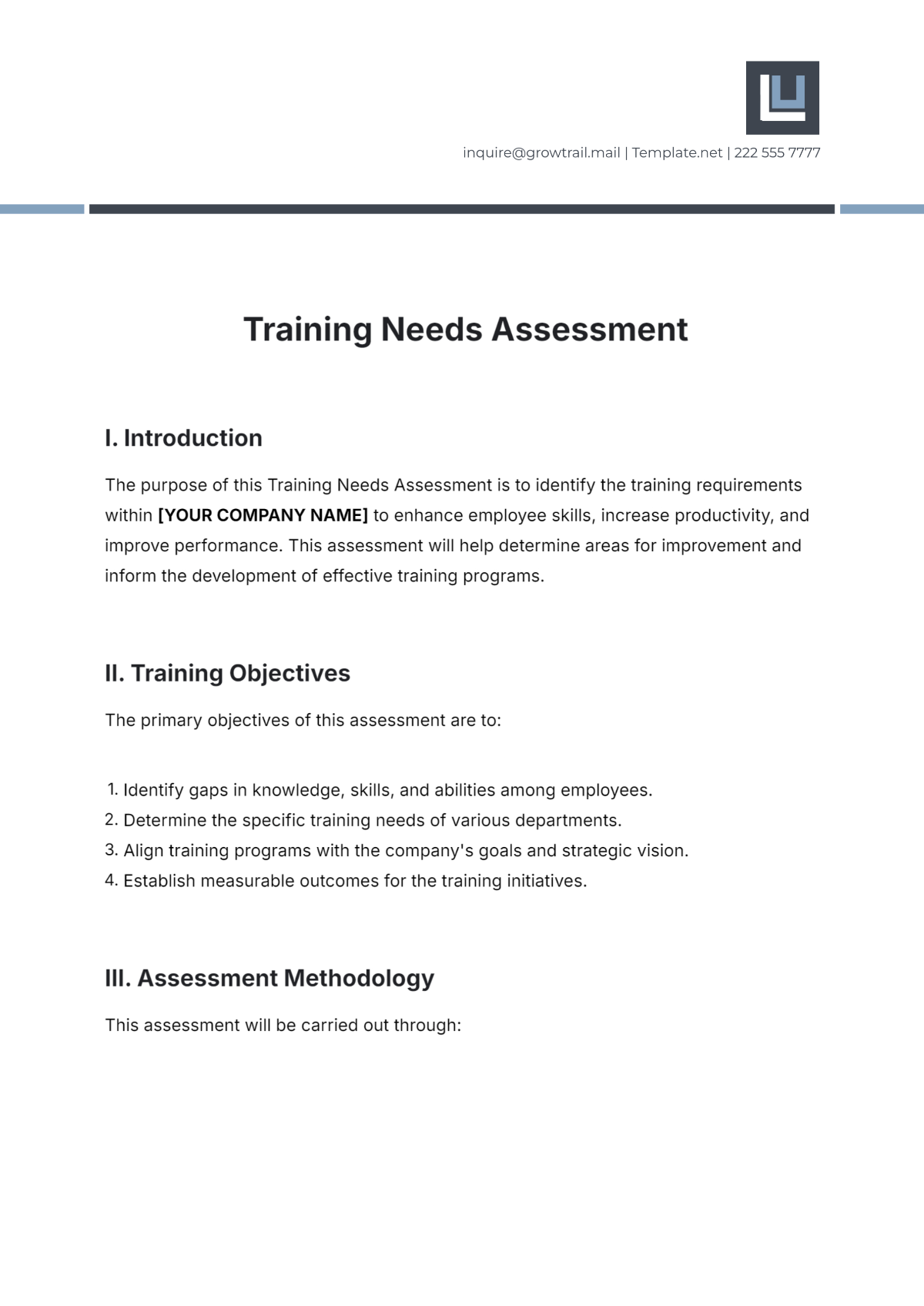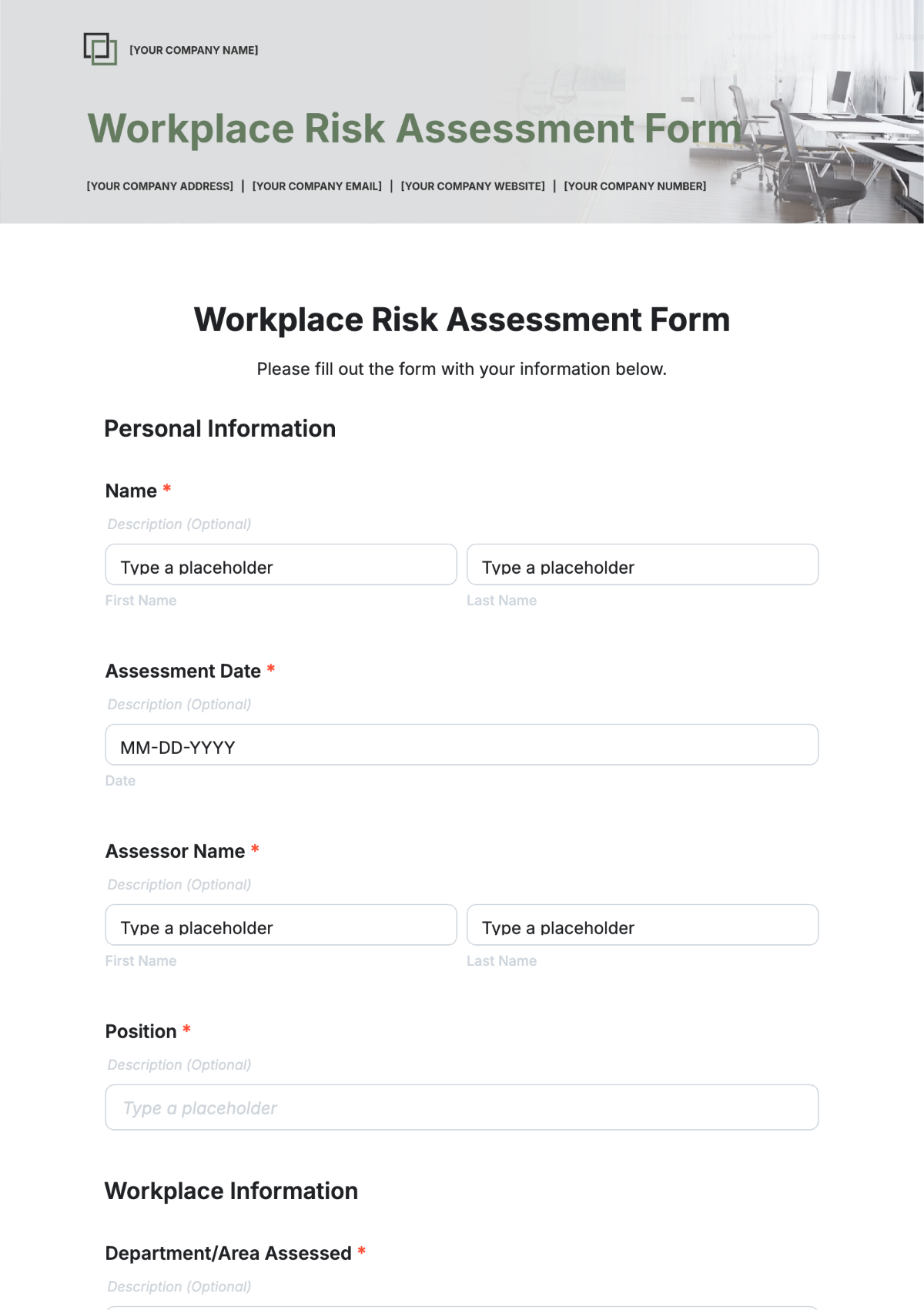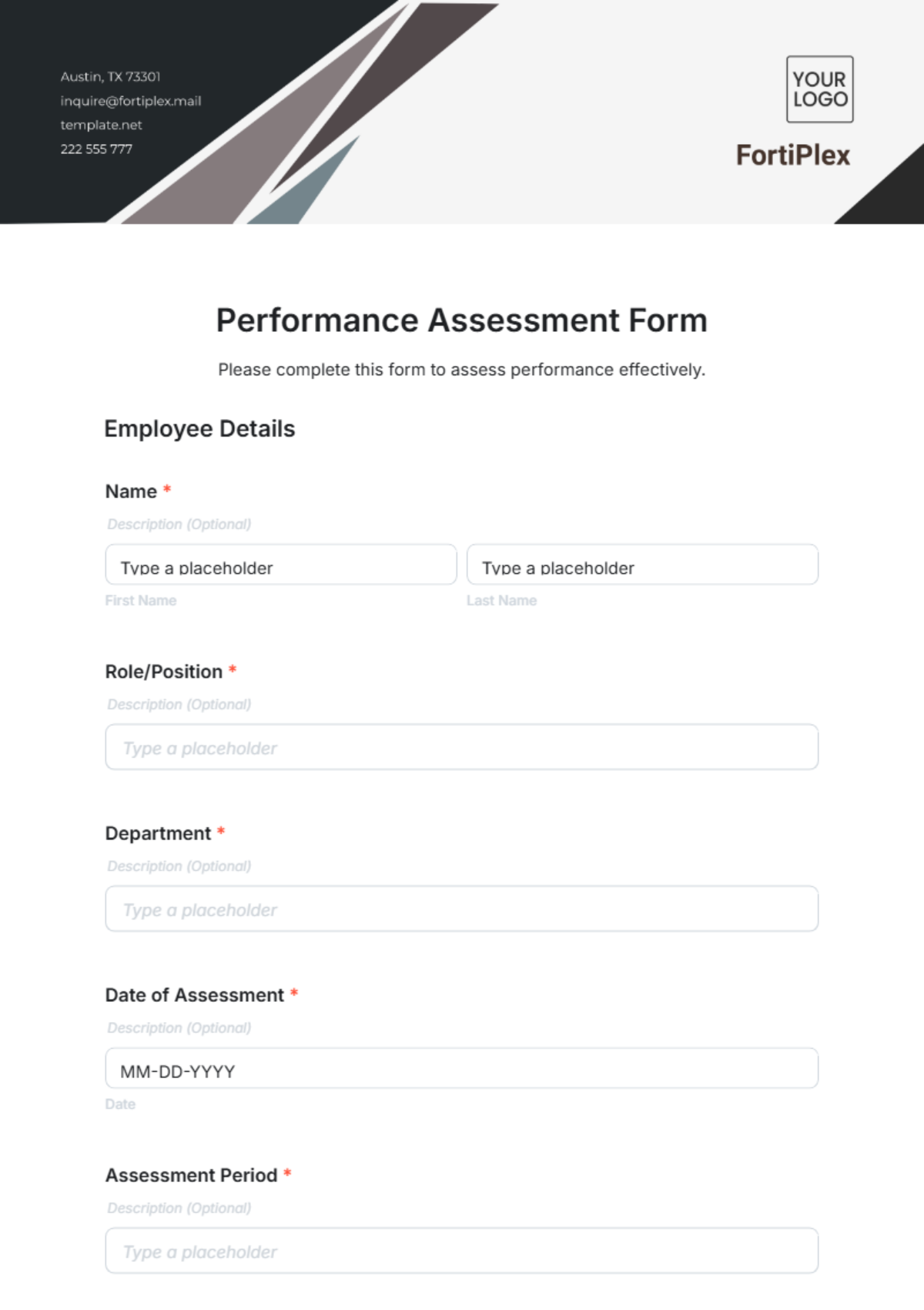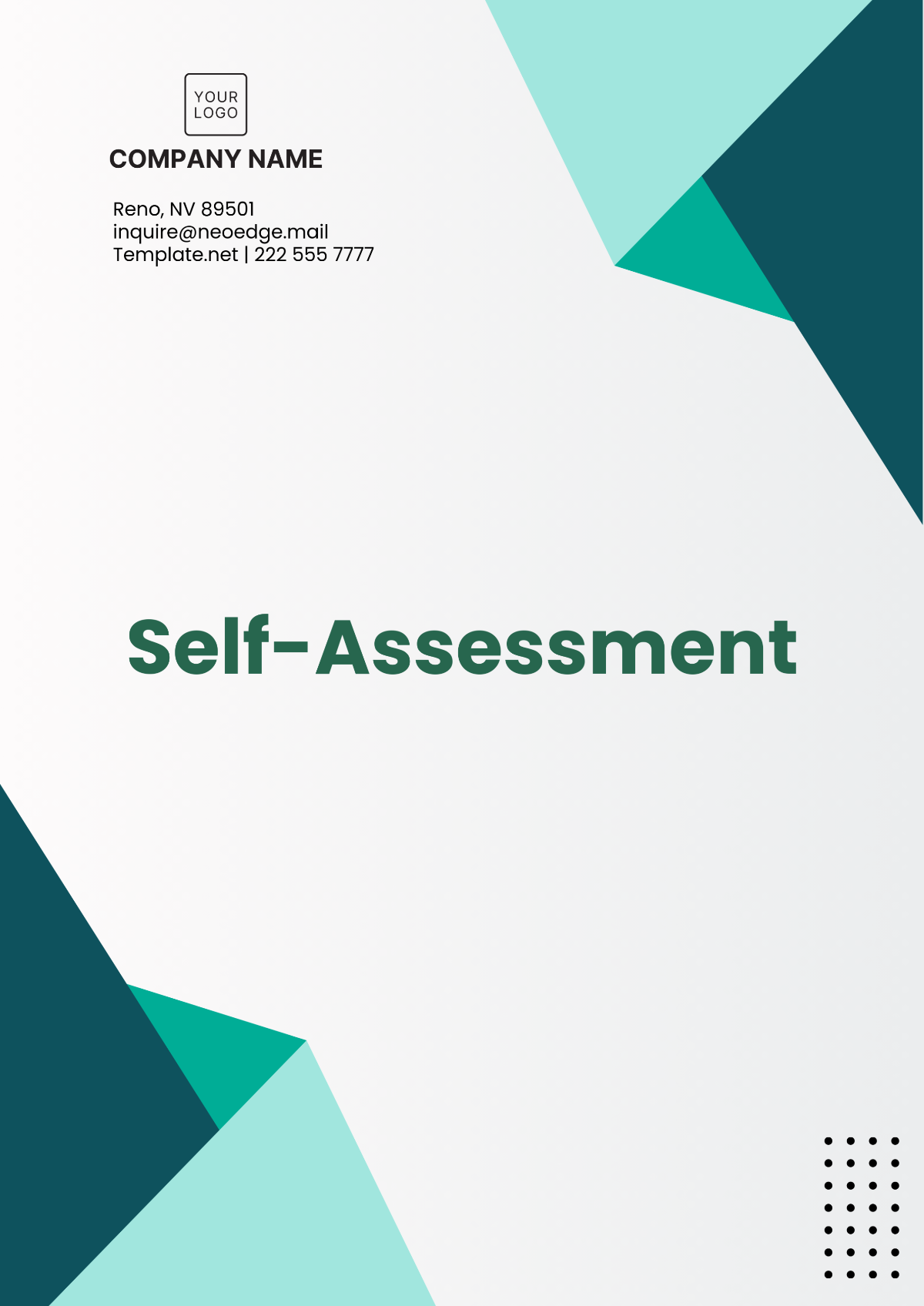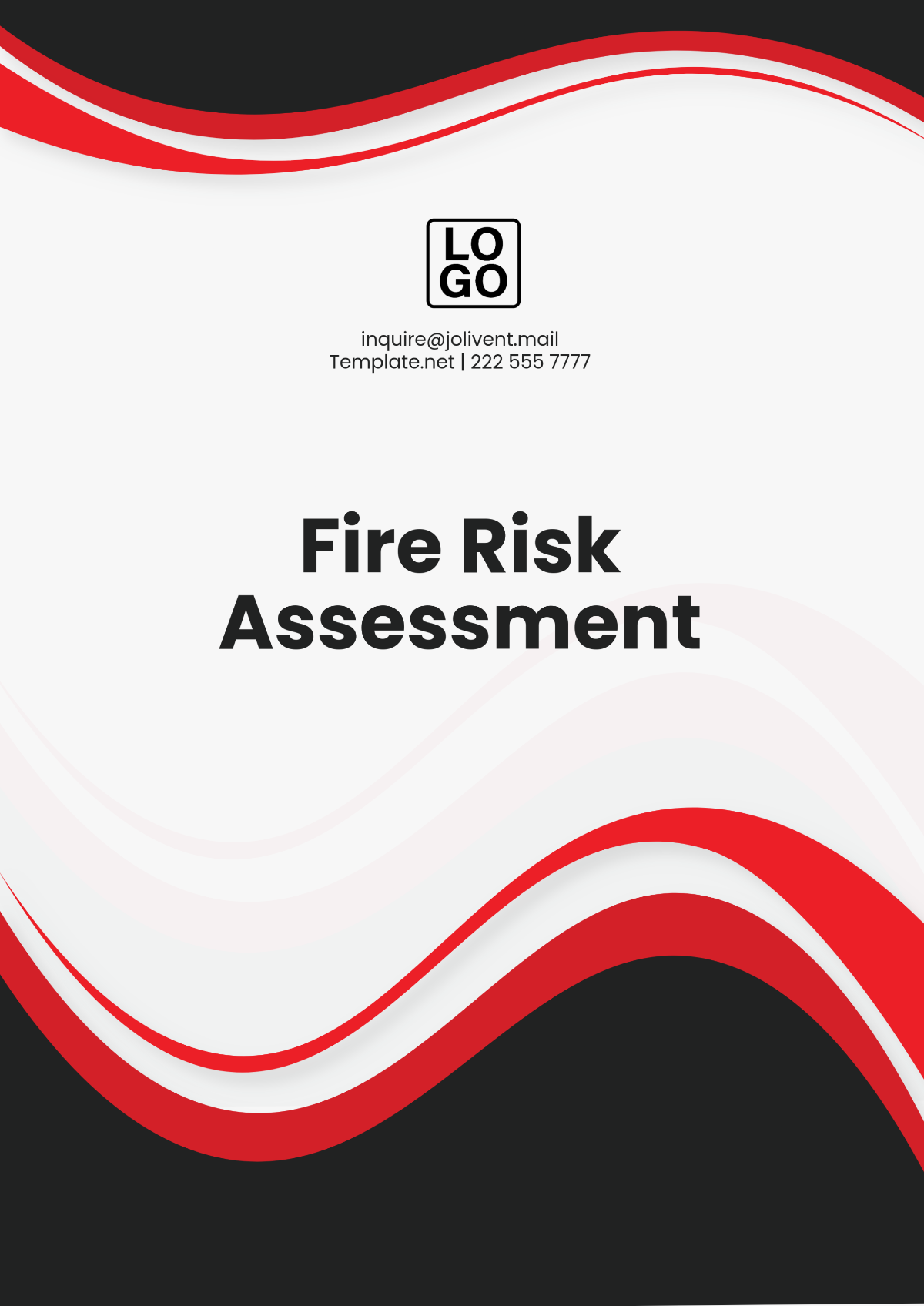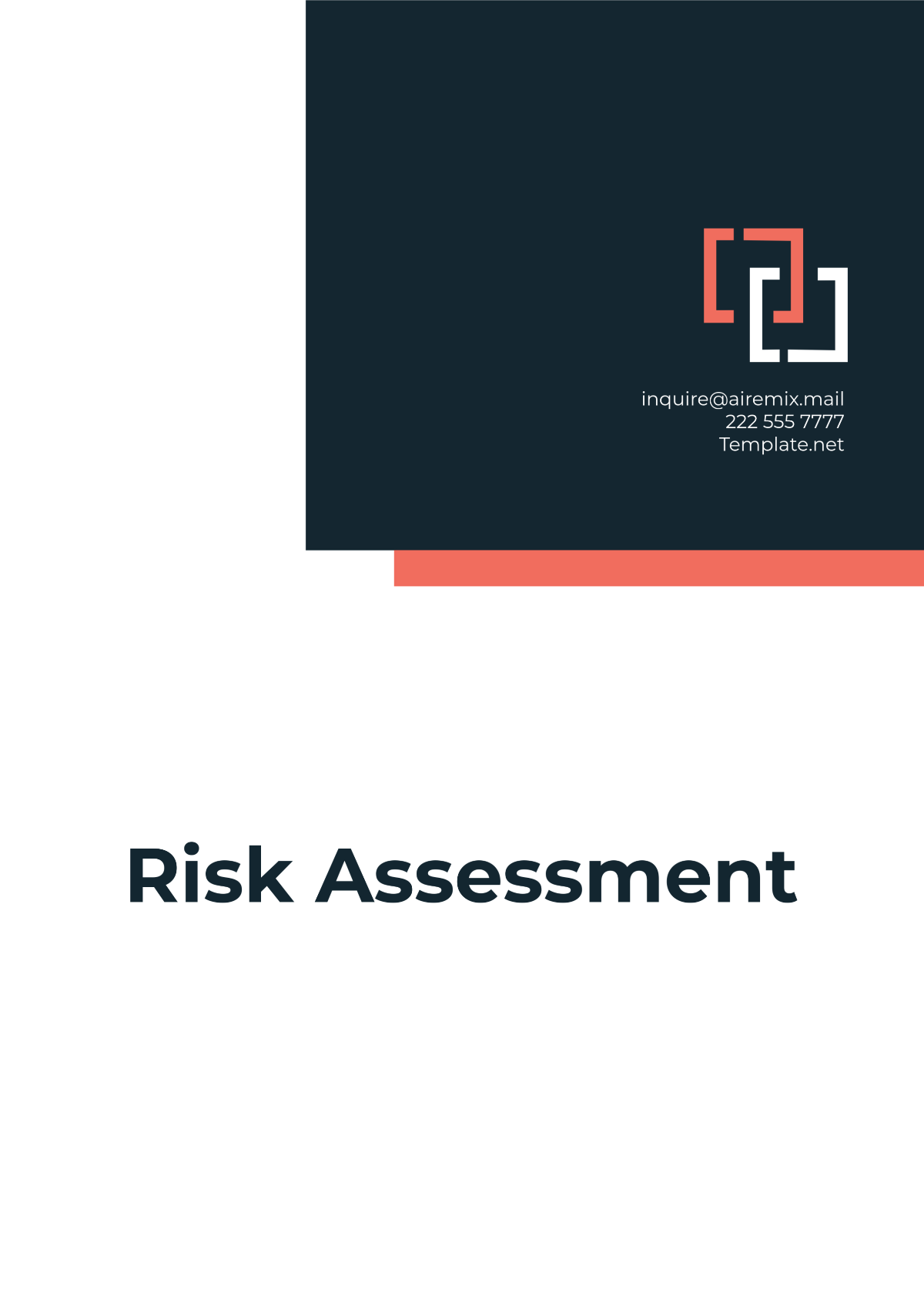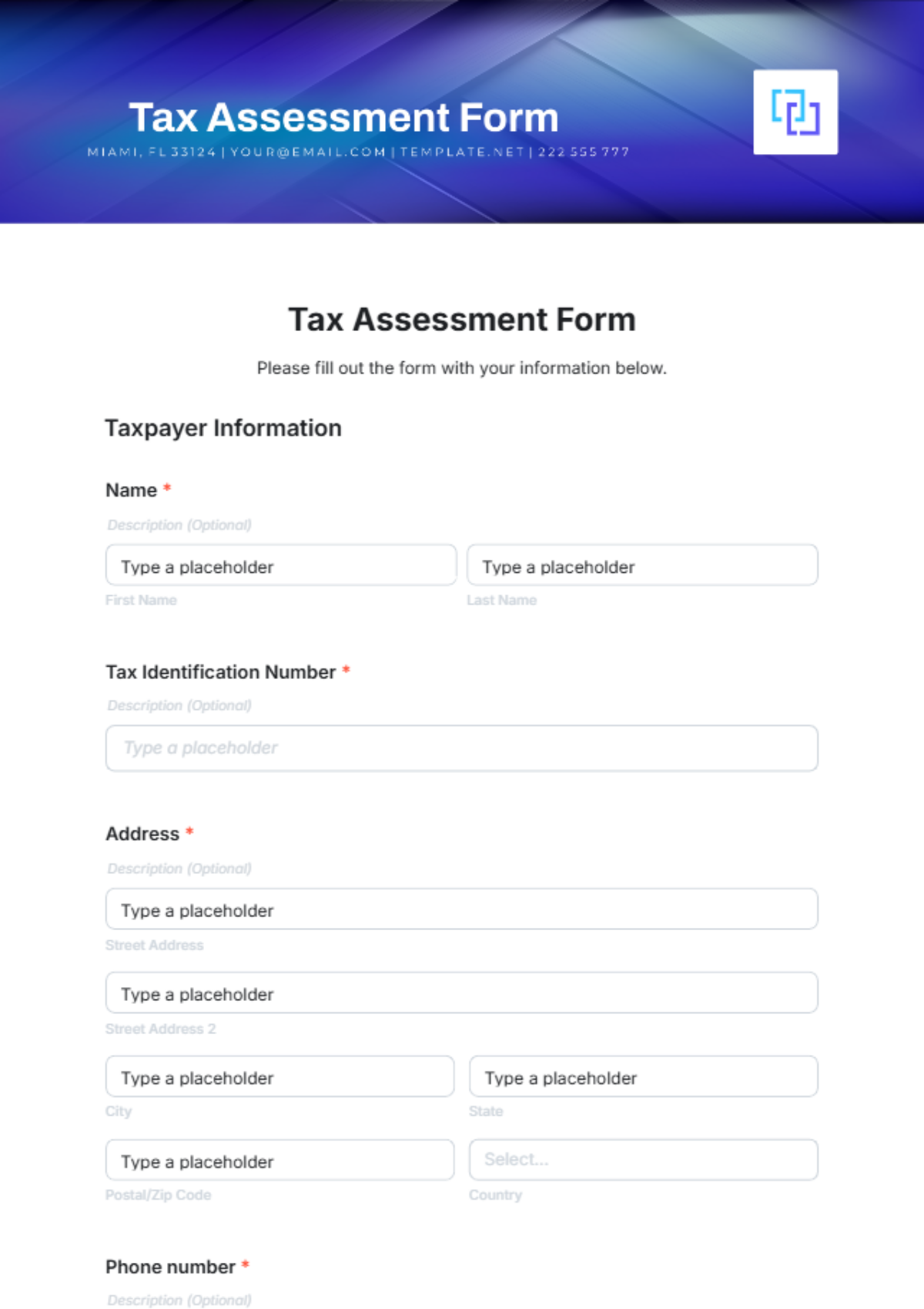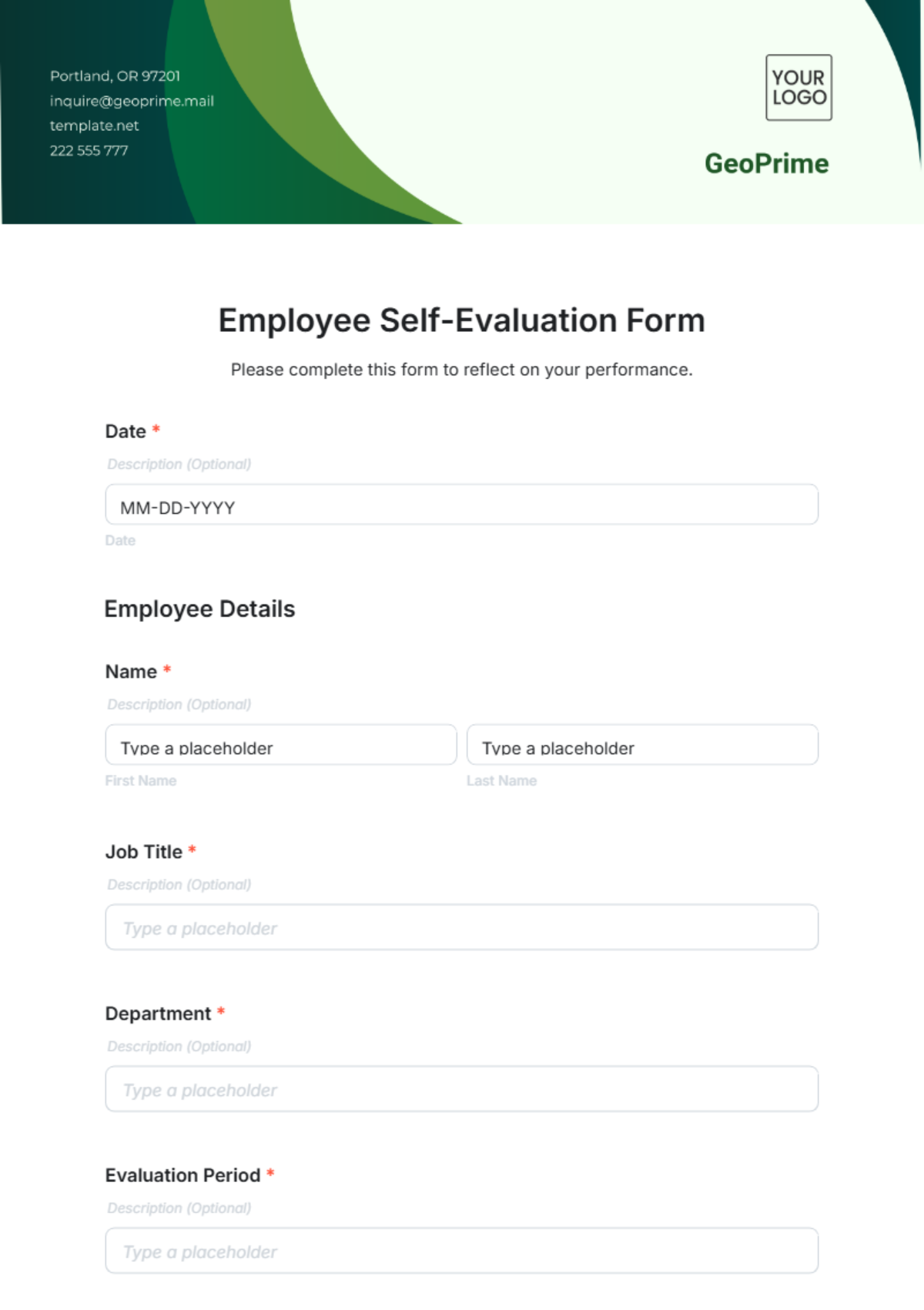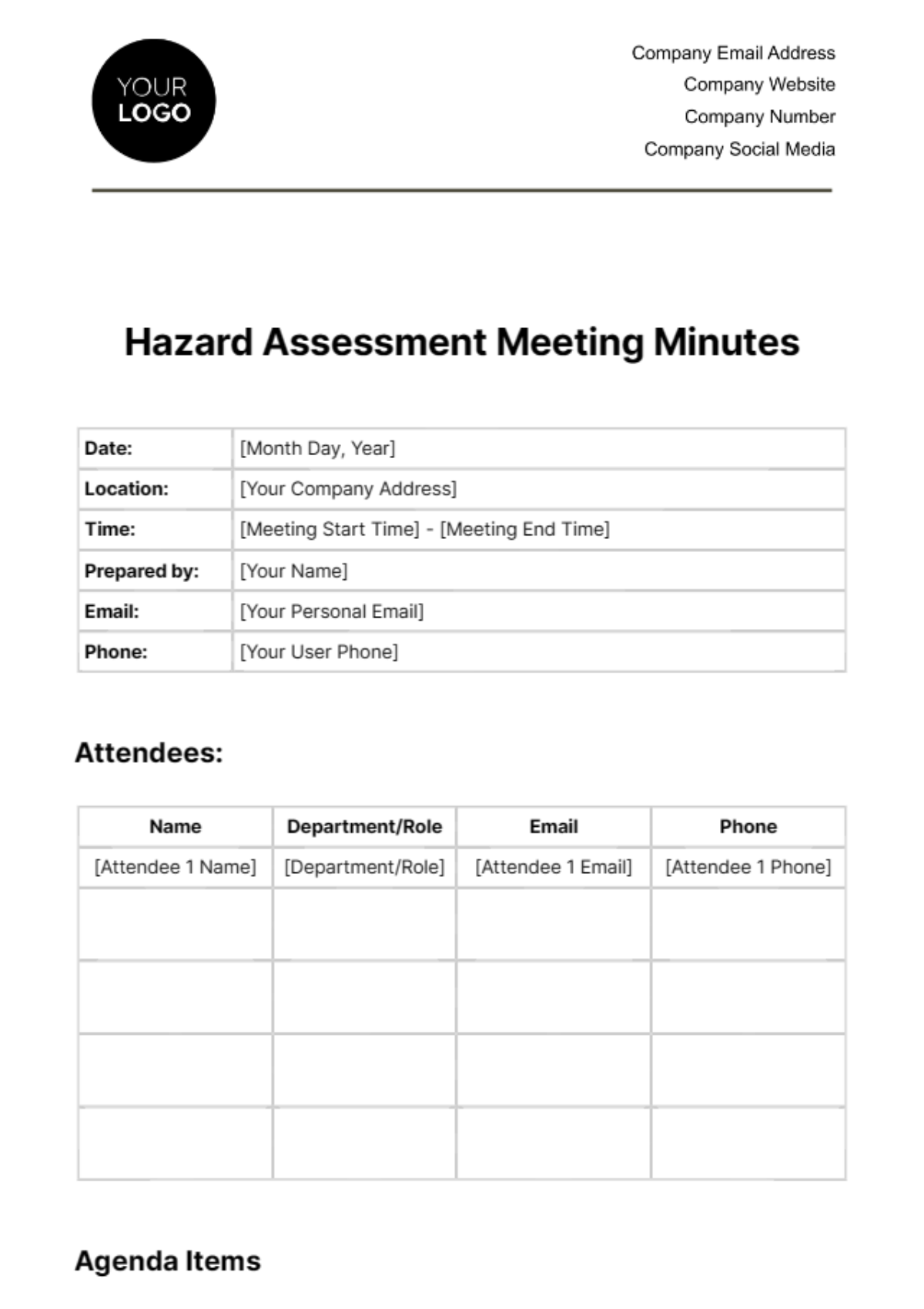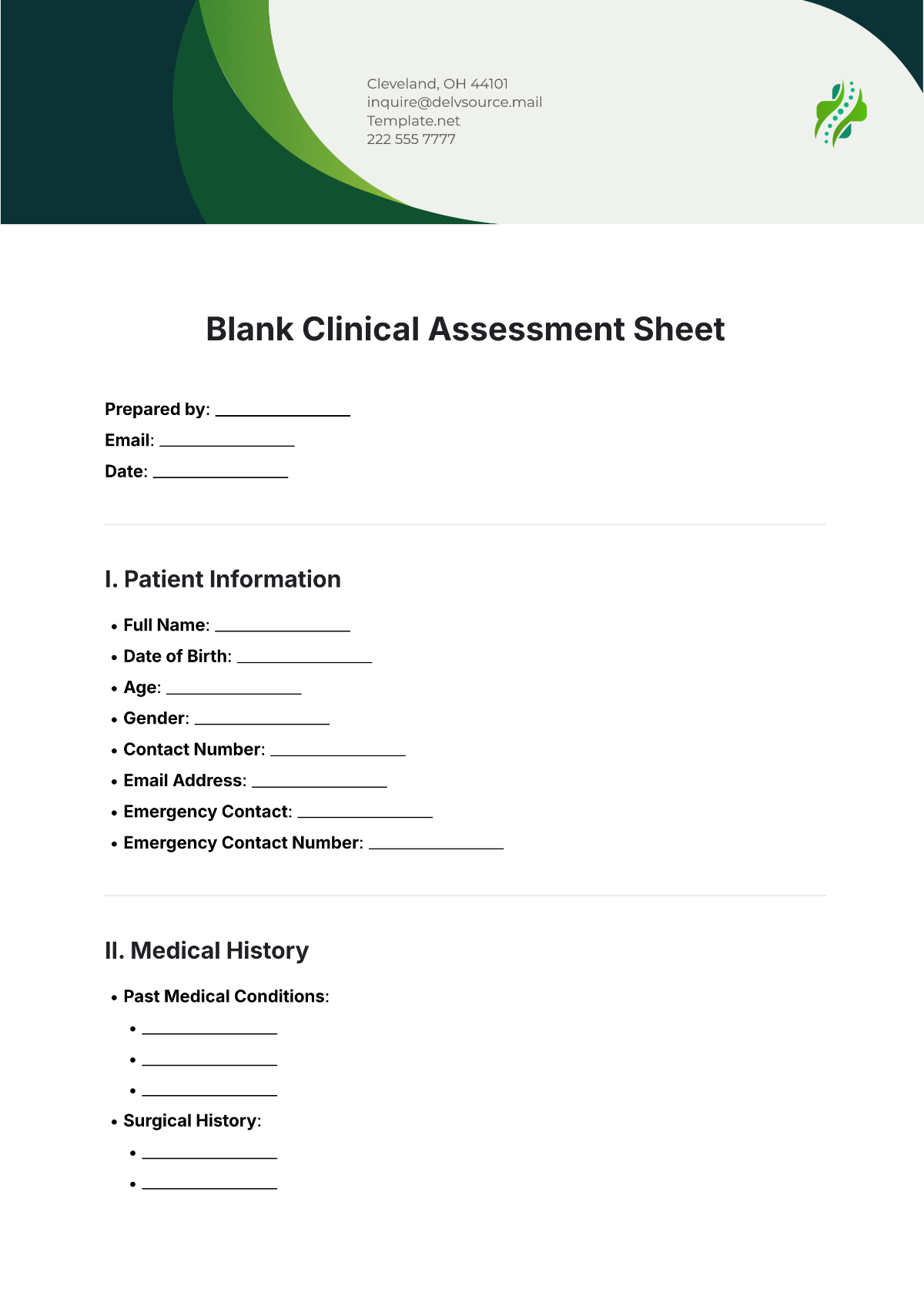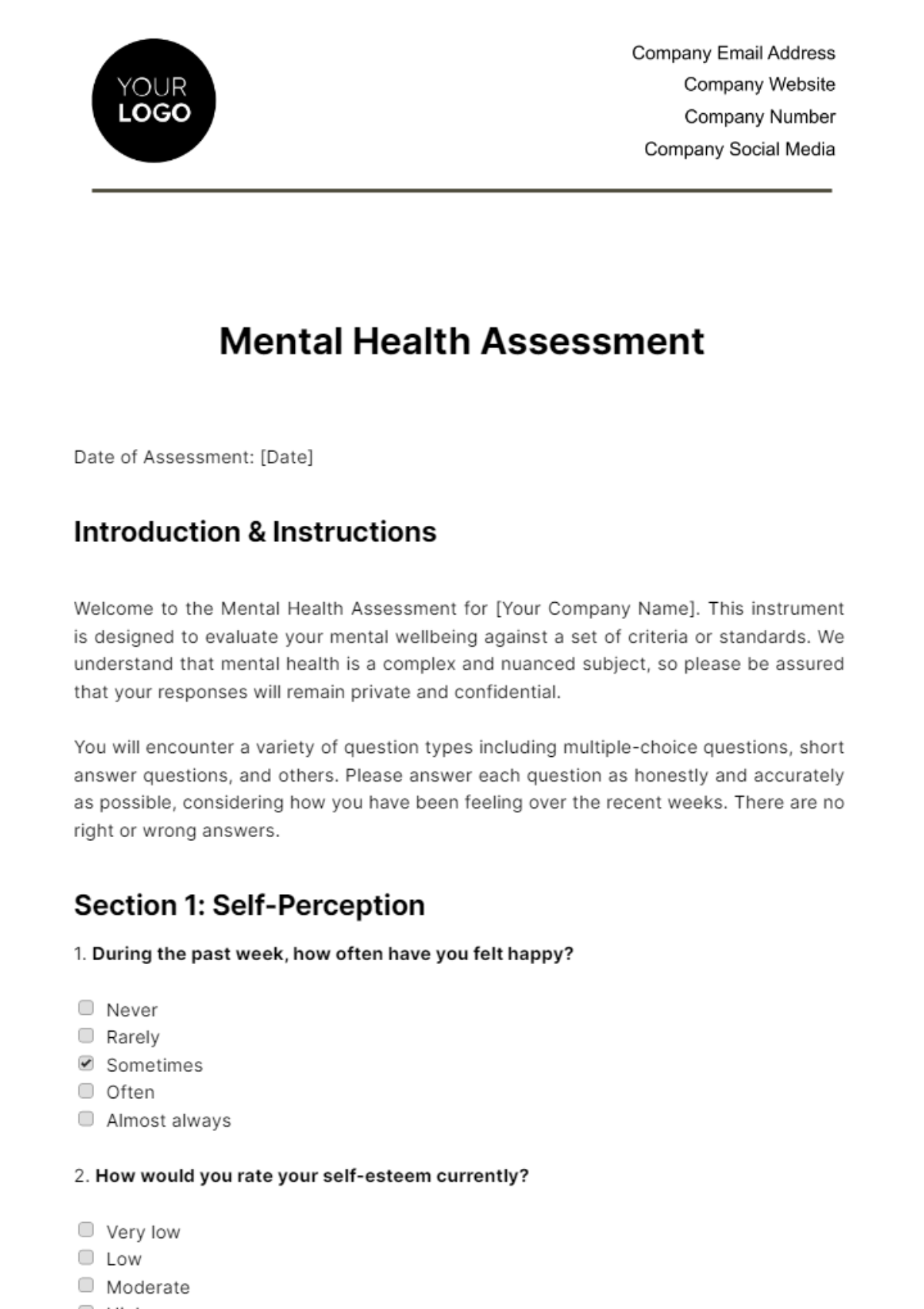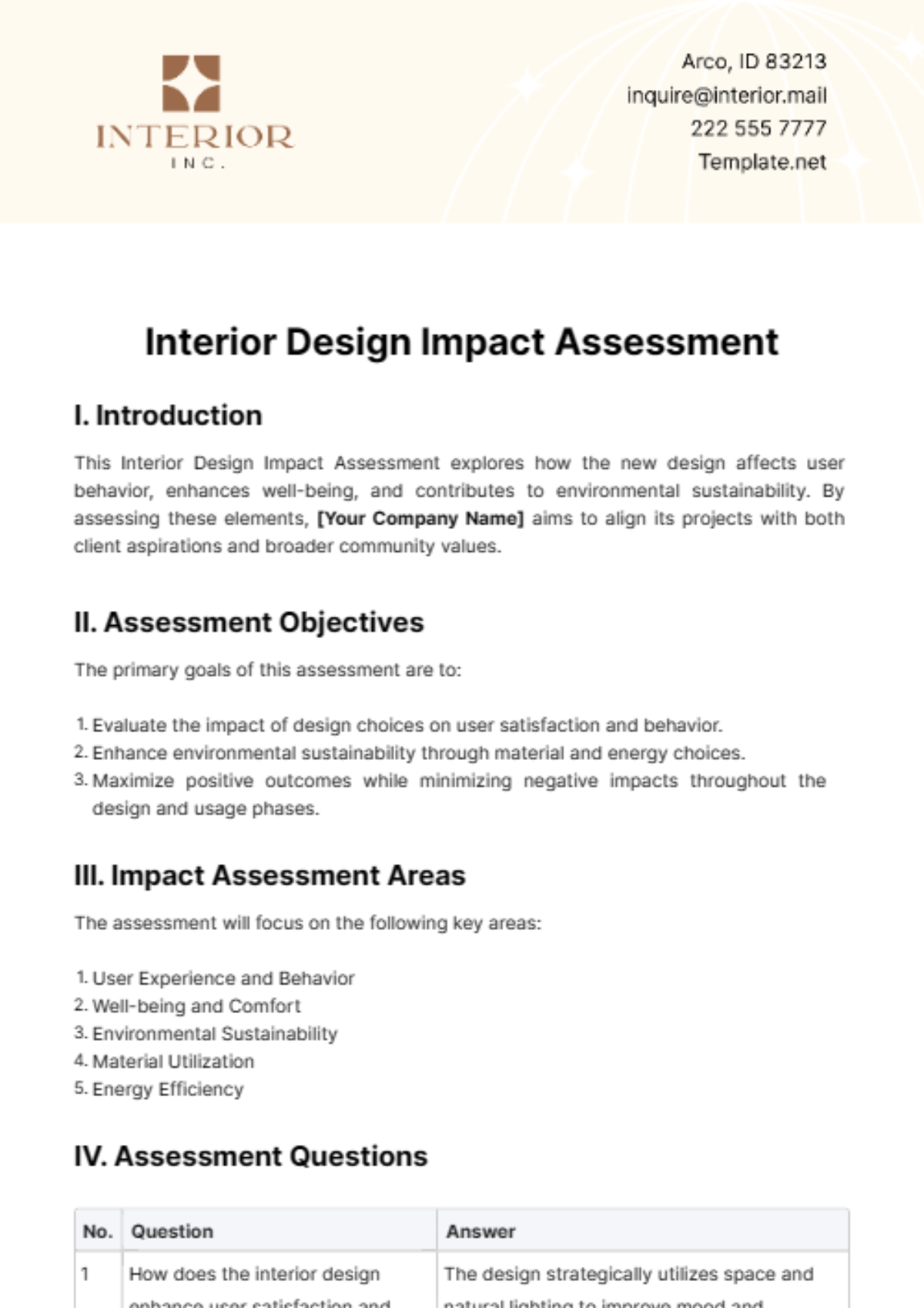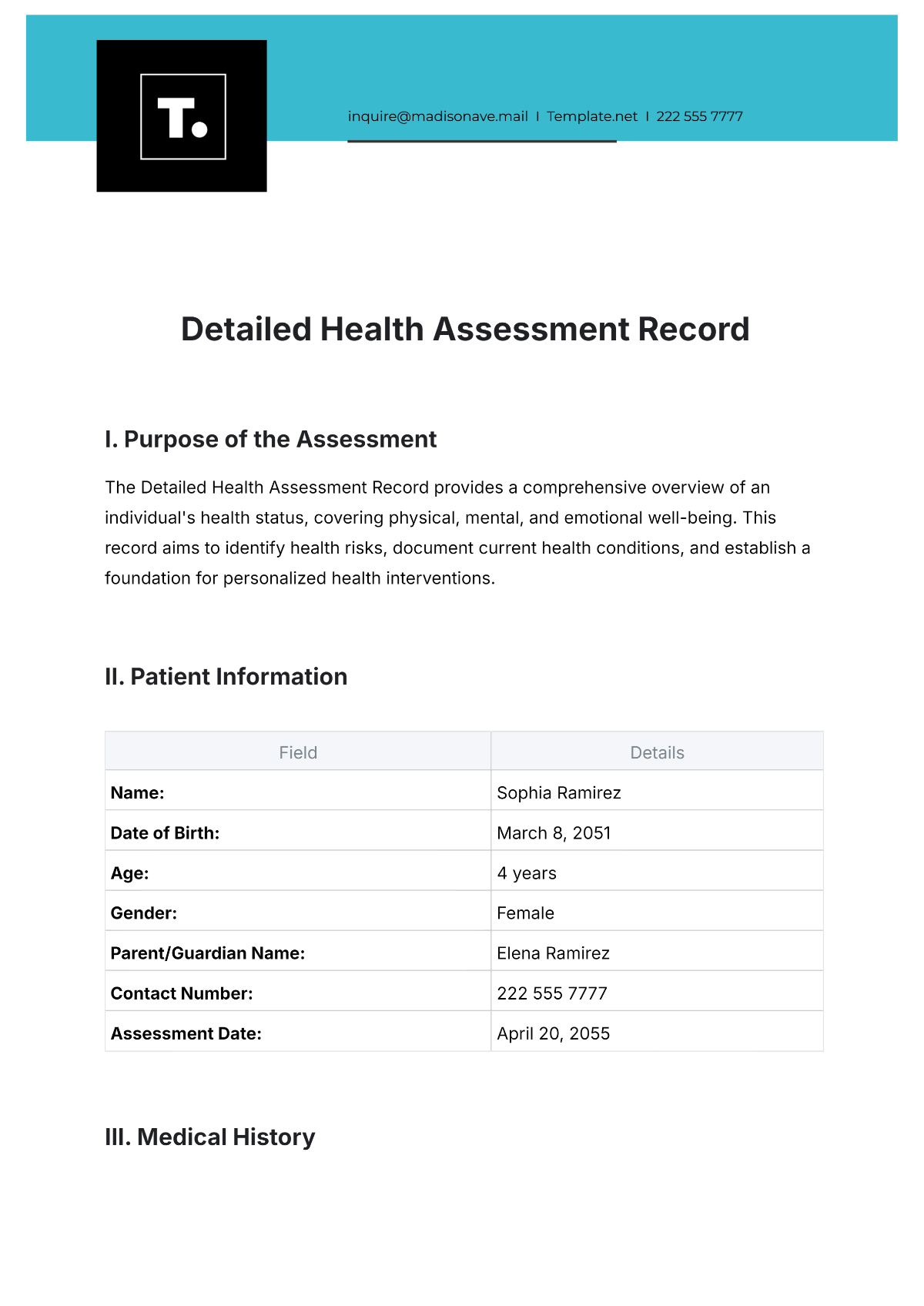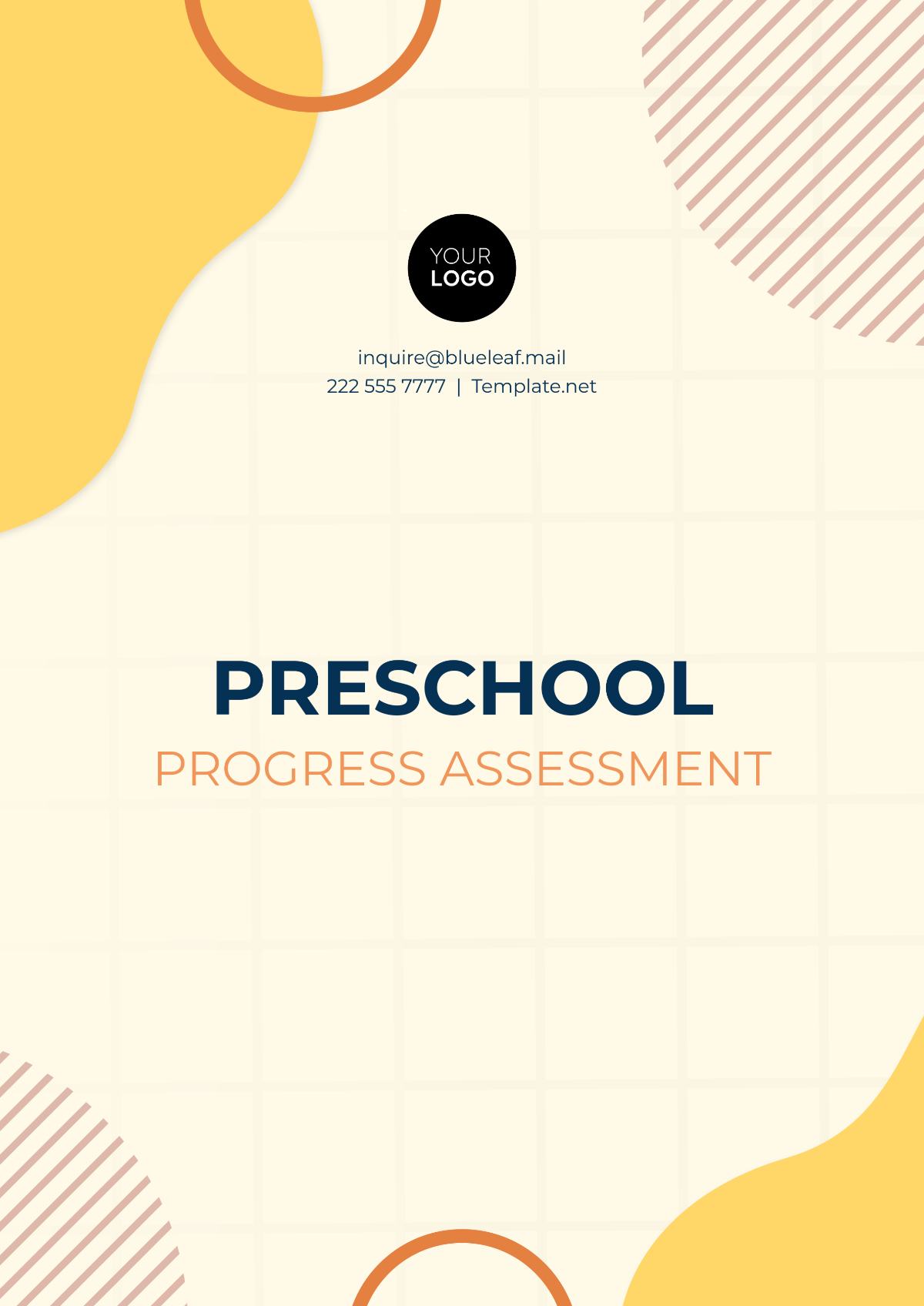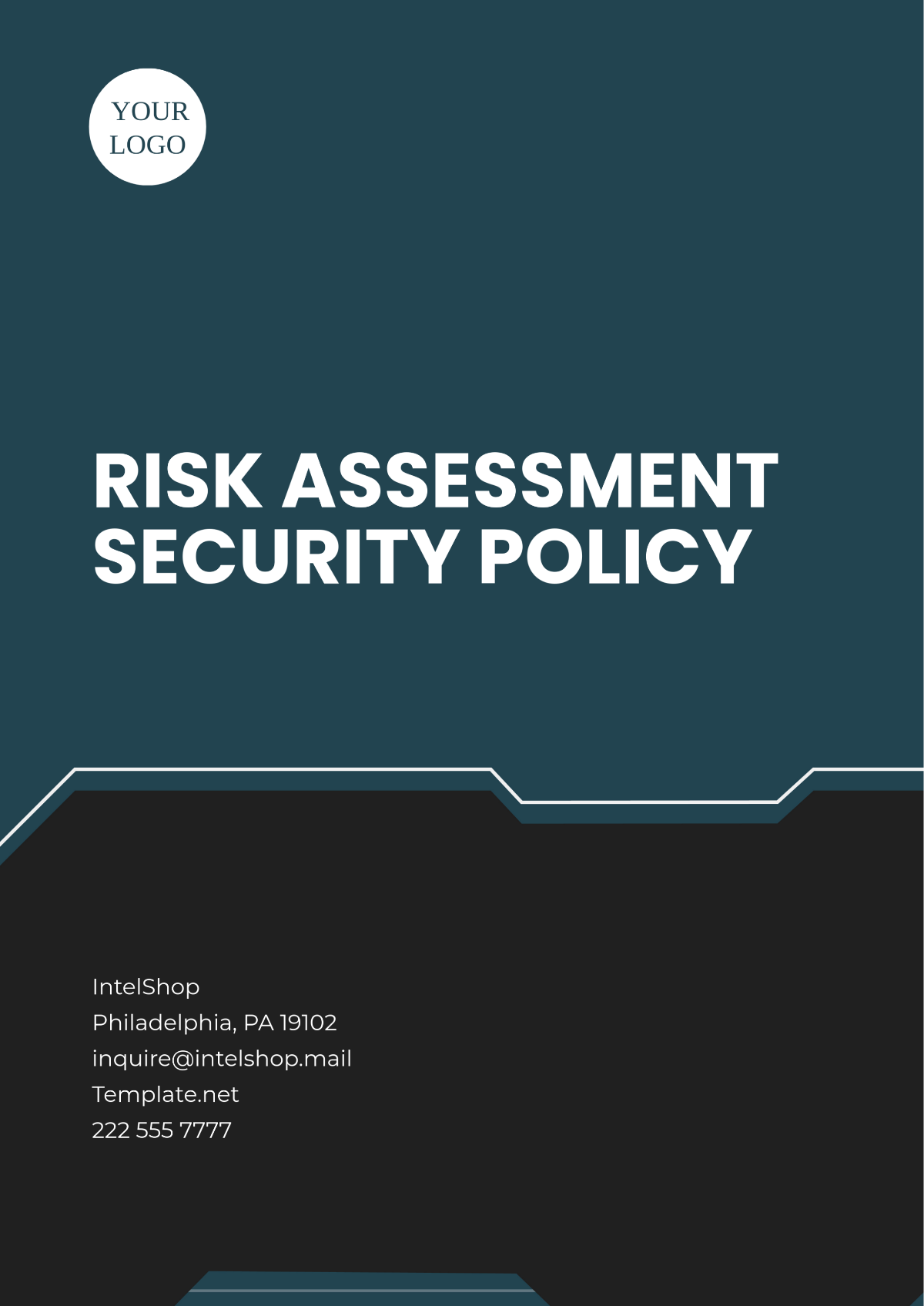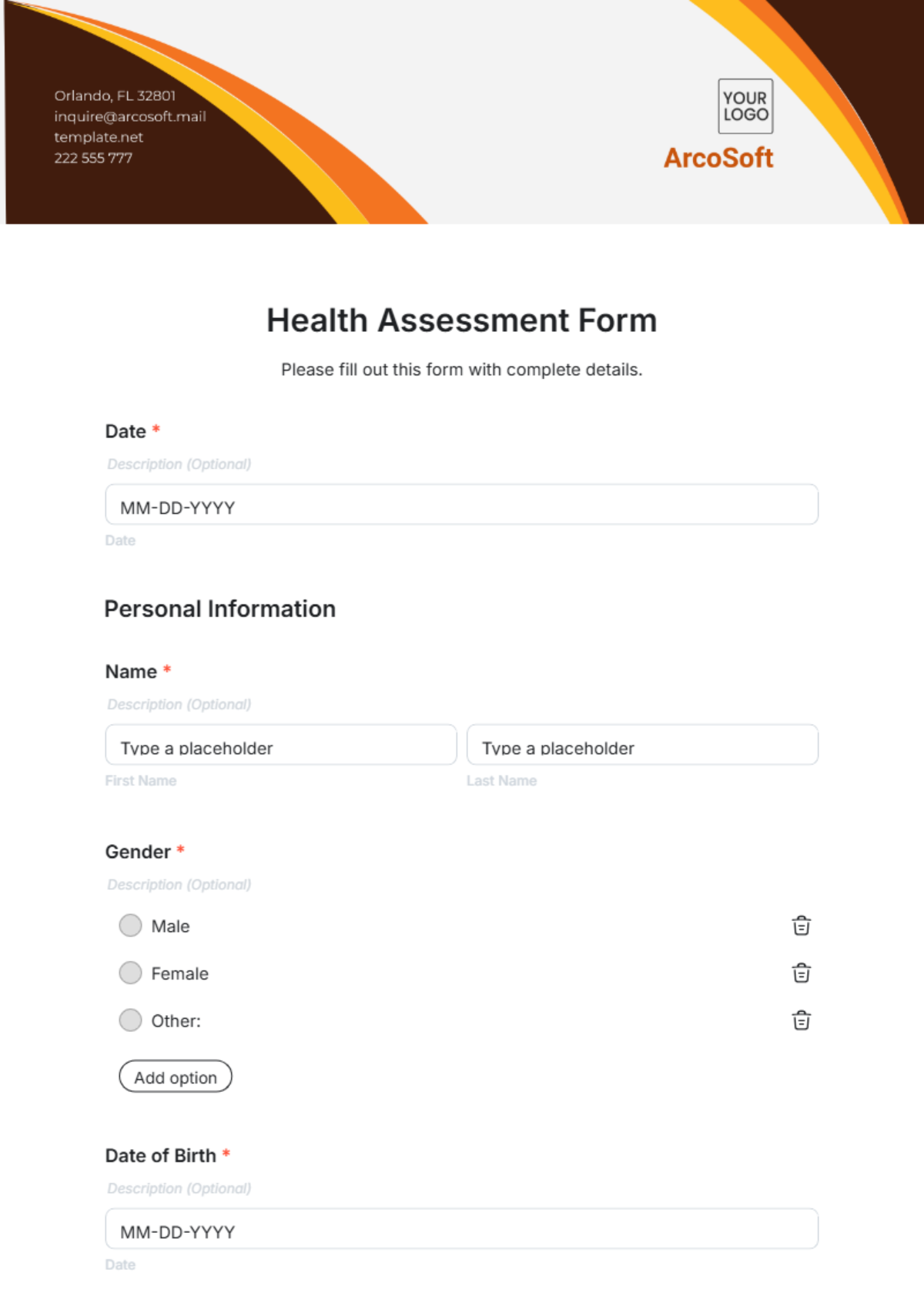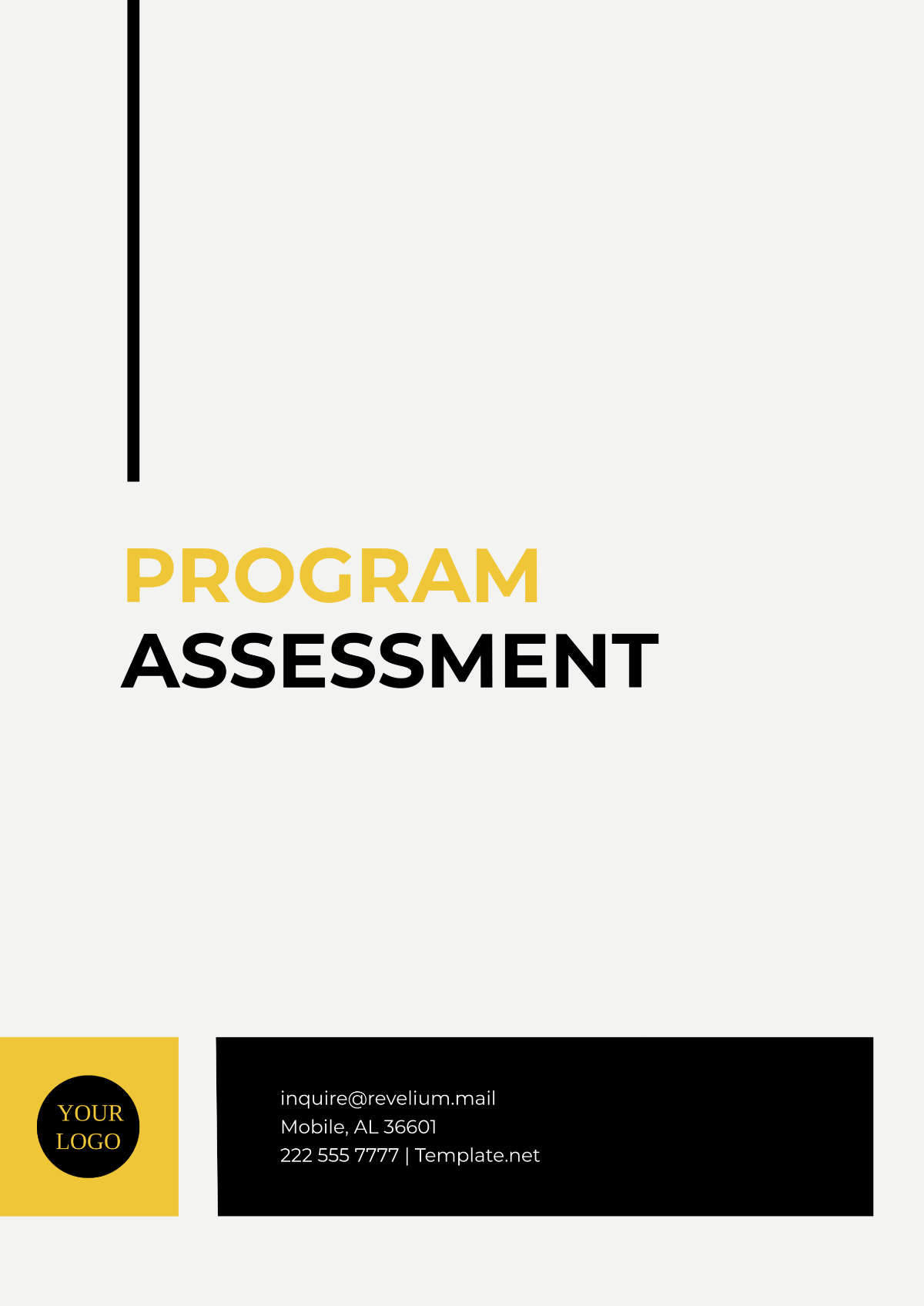ASSESSMENT PROGRESS REPORT
Prepared by: | [YOUR NAME] |
Company: | [YOUR COMPANY NAME] |
Date: | July 15, 2050 |
I. Introduction
Welcome to the Assessment Progress Report for [Your Company Name]. As the dedicated assessment team, entrusted with the task of evaluating the effectiveness of supply chain management processes within the company, we are delighted to present an update on our ongoing activities, insights gained, and recommendations formulated thus far.
II. Executive Summary
Overview: Our mission as the assessment team is to meticulously assess the efficiency and efficacy of supply chain management processes, aiming to identify areas of improvement and ensure alignment with organizational goals. This report encapsulates our journey thus far and highlights key findings and recommendations for enhancing our supply chain operations.
Assessment Progress Highlights: Over the reporting period, we have made substantial strides in advancing through the various phases of the assessment journey, from inception to data collection, analysis, and validation. Notable achievements include the successful completion of stakeholder interviews, analysis of survey responses, and validation of preliminary findings.
Key Challenges and Mitigation Strategies: Despite encountering challenges, such as limited data availability and coordination issues, we have proactively employed strategies like conducting additional outreach efforts and leveraging innovative data synthesis techniques to address these obstacles and uphold the integrity of our assessment process.
III. Methodology
Activity | Description |
|---|---|
Data Collection | Through a combination of structured interviews with department heads, administration of customer surveys, and meticulous review of relevant documents, we have meticulously gathered a wealth of data. We aimed to capture a comprehensive picture of supply chain management from multiple perspectives. |
Analysis | Employing sophisticated statistical software tools, we have conducted rigorous quantitative analysis alongside insightful thematic analysis to dissect qualitative data. This approach allowed us to uncover trends, patterns, and correlations within the data, providing valuable insights into the effectiveness of our supply chain operations. |
Validation | To ensure the robustness and validity of our findings, we have subjected our preliminary results to scrutiny by an esteemed expert panel and diligently incorporated feedback from stakeholders to refine our analysis and interpretations. This iterative process has enhanced the credibility and reliability of our assessment outcomes. |
IV. Progress Update
A. Data Collection:
Our interviews with key stakeholders, including department heads, have provided invaluable insights into the inner workings of our supply chain processes, enriching our understanding of its nuances and challenges. We conducted 30 interviews, covering diverse perspectives to ensure comprehensive data collection.
Analysis of 200 meticulously crafted surveys has furnished us with a comprehensive understanding of prevalent trends and preferences among our customer segment. The survey responses provided quantitative data to complement our qualitative findings.
Rigorous scrutiny of 100 pertinent documents has afforded us a holistic view of our compliance status vis-a-vis industry standards. Document review served as a critical source of information to validate and contextualize our findings.
B. Analysis:
Leveraging the power of SPSS, we have conducted intricate quantitative analyses, unearthing correlations, and trends that illuminate underlying patterns within our data. These statistical insights have guided our understanding of the factors influencing our supply chain operations.
Our thematic analysis efforts have resulted in the identification of key recurring themes, providing valuable qualitative insights that complement our quantitative findings. This qualitative analysis added depth and richness to our assessment outcomes, capturing nuances and contextual factors.
By meticulously examining outliers within our dataset, we have gained deeper insights into potential aberrations and anomalies, thereby enriching the robustness of our analysis. This attention to detail ensured that our findings accurately reflected the underlying dynamics of our supply chain operations.
C. Validation:
The presentation of our preliminary findings to a cross-functional expert panel has provided us with invaluable validation and constructive feedback, enabling us to refine our analysis and enhance the accuracy of our conclusions. Expert validation enhanced the credibility and reliability of our assessment outcomes.
Through ongoing engagement with stakeholders, we have fostered a collaborative atmosphere conducive to the exchange of ideas and perspectives, thereby enriching the depth and breadth of our assessment process. Stakeholder engagement ensured that our findings resonated with the operational reality and strategic priorities of the company.
By triangulating data from multiple sources and ensuring consistency across our findings, we have fortified the reliability and credibility of our assessment outcomes. Triangulation added rigor to our analysis, mitigating bias and enhancing the robustness of our conclusions.
V. Key Findings
Category | Findings |
|---|---|
Compliance | We achieved 95% compliance with industry regulations, underscoring our commitment to regulatory adherence and excellence in governance. Compliance gaps were identified in inventory management practices and vendor relationships, necessitating targeted interventions to address non-compliance issues. |
Performance | We have identified three key areas of improvement within supply chain management, laying the groundwork for targeted interventions aimed at enhancing operational efficiency and effectiveness. Key performance metrics, such as inventory turnover rate and order fulfillment cycle time, revealed opportunities for optimization and process refinement. |
Risks | Our assessment has brought to light potential cyber security risks stemming from outdated software systems, necessitating proactive measures to bolster our cyber resilience posture. Vulnerabilities were identified in legacy IT systems and inadequate data encryption practices, posing significant risks to data security and business continuity. |
VI. Recommendations
A. Process Improvement:
Implementation of an automated inventory management system stands poised to revolutionize our supply chain operations, driving efficiency gains and cost savings. Automation of inventory tracking and order processing will streamline operations and reduce manual errors.
Regular training sessions aimed at enhancing employee proficiency in new software will be instrumental in facilitating smooth transitions and maximizing the potential of our technological investments. Training programs should focus on hands-on exercises and role-based scenarios to ensure the practical application of new skills.
Strategic investment in cloud-based solutions promises to unlock unparalleled scalability and agility, empowering us to stay ahead of the curve in an increasingly dynamic business landscape. Migration to the cloud will facilitate remote access and collaboration, driving innovation and flexibility across our company.
B. Risk Mitigation:
The development of a comprehensive cyber security plan, encompassing robust preventive and detective controls, is imperative to fortify our defenses against evolving cyber threats. Measures such as network segmentation and regular vulnerability assessments will enhance our cyber resilience posture.
A holistic approach to employee awareness, encompassing targeted cybersecurity training programs and simulated phishing exercises, will bolster our human firewall and mitigate the risk of social engineering attacks. Awareness campaigns should emphasize recognizing phishing emails and reporting suspicious activities to the IT department.
Implementation of multi-factor authentication mechanisms will serve as a formidable deterrent against unauthorized access, safeguarding our sensitive data and preserving the integrity of our systems. Multi-factor authentication should be enforced for privileged accounts and remote access to critical systems.
C. Compliance Enhancement:
Regular review and update of company policies to align with prevailing data protection regulations will ensure that we remain at the forefront of compliance and uphold the trust and confidence of our stakeholders. Policy updates should address emerging privacy concerns and data breach notification requirements.
Ongoing compliance audits, conducted with rigor and thoroughness, will serve as a test for our adherence to industry standards, assuring internal and external stakeholders alike. These audits should be conducted annually and cover all aspects of our operations, from data handling procedures to contractual obligations.
Continuous investment in compliance training programs will empower our workforce with the requisite knowledge and skills to navigate complex regulatory landscapes with confidence and competence. Training modules should be tailored to different job roles and updated regularly to reflect changes in regulations and best practices.
VII. Conclusion
In summary, as [Your Company Name]'s assessment team, we are proud of our progress and committed to continuous improvement in our supply chain. With insights from this report, we are ready for the next phase, and confident in achieving greater success. We thank all stakeholders for their support and look forward to a bright future for our company.

